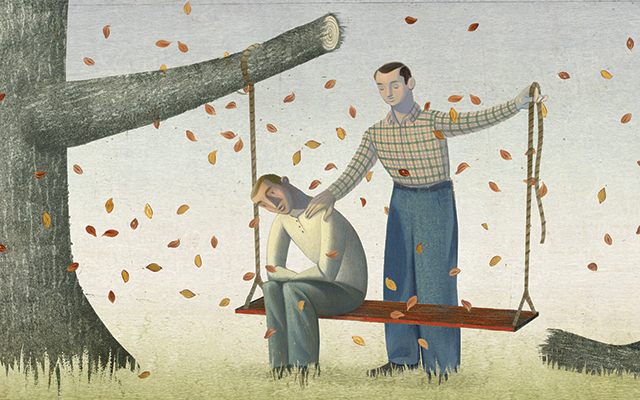Funerals tend to turn up on our social calendar far more often than weddings these days, so you’d think My Lovely Wife and I would’ve given some thought to the ins and outs of mortuaries, cemeteries, cremation, coffins, and other uplifting features of the death industry. Like most folks, however, we tend to think of our eventual demise as, well . . . eventual. So why delve into the rather morbid details of postmortem packaging and pricing earlier than is absolutely necessary?
Because it’s complicated, explains Carson Kessler. Writing at ProPublica, Kessler notes that pricing, policies, and services vary widely across the industry — and even among local funeral homes. And the industry’s lack of transparency is so troublesome that the Federal Trade Commission (FTC) has spent the past two years reviewing its admittedly lax rules governing these businesses and may be ready to demand some changes.
Only since the mid-’80s has the FTC required that funeral homes disclose their prices — and then only if the grieving customer actually inquires about costs. They must also provide an itemized list of products and services when one is requested and allow customers to select specific items rather than accept the often bloated “packages” funeral directors prefer to offer. But few people, whether because of the emotions involved in the transaction or simply a lack of information, understand their options.
“Most of what people think they are required to purchase is not true,” Joshua Slocum, executive director of the Funeral Consumers Alliance, tells Kessler. “Basically, the only thing that has to happen when a person dies, in order to satisfy the laws, there has to be a death certificate signed by a doctor, the body has to be buried, cremated, or donated to anatomical science within a certain period of time, and that’s literally all that is required. Everything else is optional.”
“Basically, the only thing that has to happen when a person dies, in order to satisfy the laws, there has to be a death certificate signed by a doctor, the body has to be buried, cremated, or donated to anatomical science within a certain period of time, and that’s literally all that is required. Everything else is optional.”
Slocum says he believes the FTC is seriously considering a measure to require that funeral homes clearly disclose that embalming is not required by law (a common misperception) and, perhaps more importantly, post their prices online so customers can more easily compare rates and services among competing mortuaries.
“Anytime you pick five or six funeral homes, all within the same city or region, and you canvass them, you will find that there’s a price difference of thousands of dollars for exactly the same service all within a service area available to you,” he explains. “And you will not know this because the vast majority of people will say, ‘Oh, well, we just use our family’s funeral home.’”
People tend to think of funeral homes as a kind of church, Slocum notes, and that can muddle their decision-making and cause them to overlook cost considerations in a way they’d never do under ordinary circumstances. With the median cost of a viewing and burial now edging toward $8,000 and a funeral with cremation approaching $7,000, that kind of thinking can create grievous financial difficulties.
“Your funeral home is not your minister. Your undertaker is not your counselor. Your undertaker is your car dealer for death,” Slocum says. “And I do not mean that in an insulting way. I mean it in a straightforward business way.”
Shop around, compare costs and services, and set a reasonable budget, he advises. “And for God’s sake, please don’t do this: ‘Oh, money is no object. It’s my mother. She deserves the best,’ and then three months from now, you’ve got a $15,000 bill that you can’t pay.”
Cemeteries are even less regulated than funeral homes, chiefly because the vast majority are organized as nonprofits and thus beyond the FTC’s purview. They don’t have to disclose their pricing or allow you to select a la carte products and services. If you decline to buy a pricier headstone from them, for example, Slocum says many will charge an “inspection fee” of the cheaper stone you buy from an outside source that will essentially make up the difference in price.
All this makes me appreciate how well my mother-in-law prepared for her death. She’d contacted the University of Minnesota to bequeath her body for research, drafted an advance care directive and will, reserved a plot for her ashes at the nearby VA cemetery, and even suggested music for her memorial service. It was a kind of gift, it seemed to me at the time. When she passed, she left her family with so little to worry about that we could more easily focus on working through our grief.
Her daughter and I have a ways to go before we’ll be ready to construct that kind of plan. It never seems to be quite the right time for that sort of conversation. We were sitting in a funeral home last month, for instance, solemnly awaiting the beginning of the service, when I mentioned (less solemnly than was perhaps appropriate) that, despite my frequent quips over the years, I really don’t want her to toss my corpse into our backyard compost bin when I reach my expiration date. Cremation would be OK.
If looks could kill, she’d have to start making arrangements.





This Post Has 0 Comments